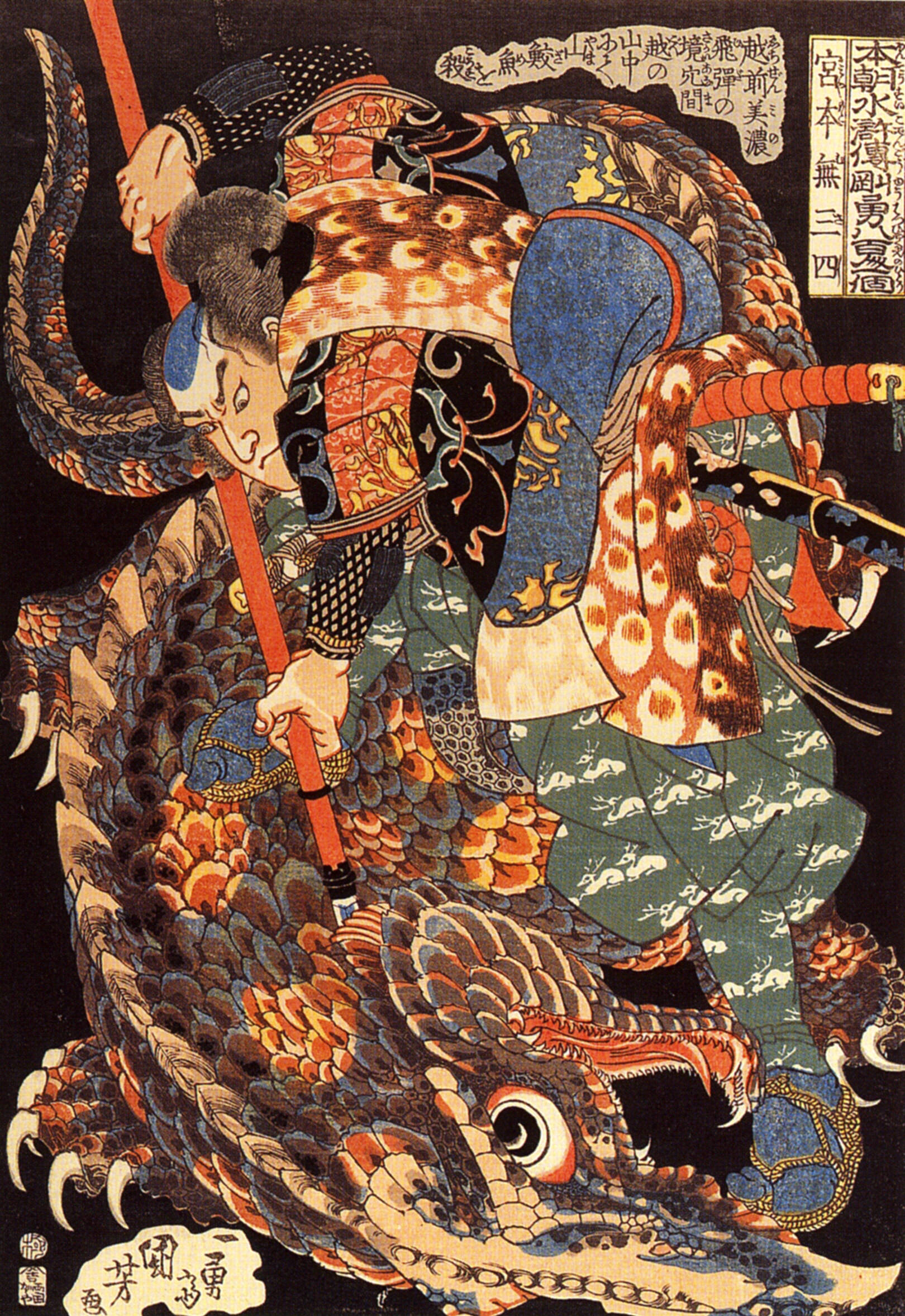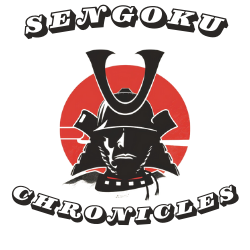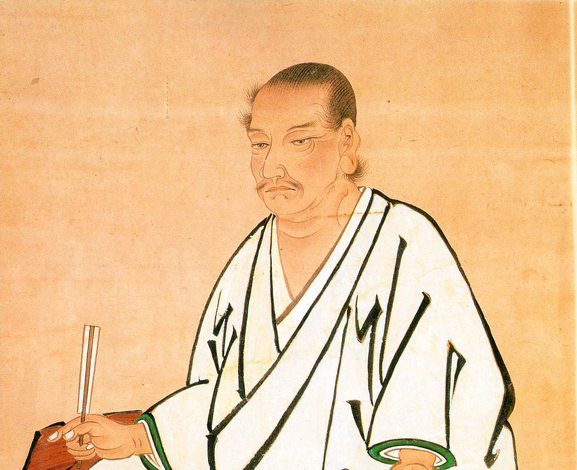Introduction
Miyamoto Musashi, a name that echoes through the annals of Japanese history, is synonymous with the epitome of samurai spirit and swordsmanship. Renowned for his undefeated record in his 61 duels, Musashi’s legacy extends far beyond his prowess with the blade. “You can only fight the way you practice,” Musashi once said, encapsulating his relentless dedication to mastery in every aspect of life. Born in 1584 during a turbulent period in Japan’s history, Musashi’s life journey is a testament to the warrior’s path of discipline, strategy, and continuous self-improvement.
In this blog post, we delve into the life and legacy of Miyamoto Musashi, exploring his early years, his legendary duels, and his philosophical contributions through his seminal work, “The Book of Five Rings.” We will also look at how Musashi transitioned from a fierce duelist to a revered philosopher and artist, leaving an indelible mark on both martial arts and Japanese culture. Join us as we uncover the story of this extraordinary figure, whose teachings continue to inspire warriors, strategists, and individuals around the world.
Early Life
Birth and Background
Miyamoto Musashi was born in 1584 in the Harima Province of Japan, now known as Hyogo Prefecture. His birth name was Shinmen Takezo, and he was born into a samurai family. His father, Shinmen Munisai, was a martial artist and swordsman of considerable repute, which meant that Musashi was exposed to the way of the warrior from a young age. Despite the early death of his mother, Musashi’s upbringing was steeped in the martial traditions and philosophies that would shape his future.
Training and Early Encounters
Musashi’s formal training in swordsmanship began under his father’s tutelage, but their relationship was strained and tumultuous. After leaving his father’s care, Musashi sought further instruction from various teachers and schools, absorbing different styles and techniques. By the age of 13, he fought his first duel against a samurai named Arima Kihei. Despite his youth and inexperience, Musashi emerged victorious, marking the beginning of his storied career as a swordsman.
In his teenage years, Musashi continued to challenge and defeat opponents, gradually building a reputation for his skill and ferocity. He participated in the Battle of Sekigahara in 1600, a significant conflict that solidified the Tokugawa shogunate’s power. Although Musashi fought on the losing side, this experience further honed his combat abilities and deepened his understanding of strategy and warfare.
Musashi’s early life was characterized by a relentless pursuit of martial excellence. His victories in duels and battles were not just physical triumphs but also intellectual ones, as he continually sought to refine his techniques and philosophies. This foundation set the stage for his later achievements and contributions to the world of martial arts and beyond.
The Path of the Warrior
Musha Shugyo (Warrior’s Pilgrimage)
After establishing himself as a formidable swordsman in his youth, Miyamoto Musashi embarked on a musha shugyo, a warrior’s pilgrimage dedicated to honing his skills and seeking enlightenment through rigorous practice and real combat experiences. This period was marked by continuous travel, where Musashi faced numerous challenges and engaged in duels with other renowned swordsmen across Japan. The musha shugyo was a vital aspect of a samurai’s development, emphasizing not only physical prowess but also spiritual and mental growth.
During his travels, Musashi refined his unique two-sword kenjutsu technique, known as Niten Ichi-ryu (Two Heavens as One). This innovative style allowed him to wield a katana and a wakizashi simultaneously, giving him a distinct advantage in combat. His adaptability and willingness to learn from each encounter solidified his reputation as an invincible swordsman. Through countless duels and skirmishes, Musashi’s skills were sharpened, and his understanding of strategy deepened, shaping him into a master of his craft.
![Sasaki (right) engages Miyamoto Musashi on the shores of Ganryū Island. Woodblock print triptych by Yoshifusa Utagawa [ja], 1840s](https://sengokuchronicles.com/wp-content/uploads/2024/06/Miyamoto-Musashi-Fights-Sasaki-Kojiro-at-Ganryujima-Ukiyo-e.png)
Duel with Sasaki Kojiro
One of the most legendary events in Musashi’s musha shugyo was his duel with Sasaki Kojiro, a renowned swordsman known for his exceptional technique and long-bladed nodachi. The duel took place on April 13, 1612, on Ganryu Island, a remote and picturesque location that would become synonymous with their epic encounter.
Kojiro, also known as “The Demon of the Western Provinces,” was famous for his “Tsubame Gaeshi” or “Swallow Cut,” a swift and deadly technique. Musashi, aware of Kojiro’s reputation and skills, approached the duel with careful planning and strategic foresight. He arrived late to the duel, using a boat paddle as a weapon, which he had carved into a wooden sword.
The duel was swift and decisive. Musashi’s unconventional tactics and psychological manipulation unsettled Kojiro. In a single, powerful strike, Musashi defeated Kojiro, solidifying his status as the greatest swordsman of his time. This victory was not just a testament to his physical abilities but also his strategic brilliance and mental acuity.
Musashi’s path of the warrior was a journey of relentless self-improvement, marked by significant duels and encounters that shaped his martial philosophy. His dedication to the way of the sword, combined with his strategic genius, left an indelible mark on the world of martial arts. Musashi’s legacy as an undefeated swordsman and a master strategist continues to inspire and influence practitioners and enthusiasts worldwide.
Philosophical Contributions
The Book of Five Rings
Miyamoto Musashi’s most enduring legacy lies in his philosophical work, “The Book of Five Rings” (五輪書, Go Rin no Sho). Written in 1645, shortly before his death, this treatise encapsulates Musashi’s insights into strategy, tactics, and martial arts. The book is divided into five volumes, each named after an element in Japanese Buddhist philosophy: Earth, Water, Fire, Wind, and Void. Each book delves into different aspects of combat and strategy, offering profound wisdom that transcends the battlefield.
- The Earth Book
- Focuses on the basics of martial arts and the foundation of strategy.
- Emphasizes the importance of understanding the fundamentals and building a strong base.
- Introduces Musashi’s concept of “Heiho” (strategy) and the importance of situational awareness.
- The Water Book
- Explores adaptability and fluidity in combat, drawing parallels between water’s ability to conform to its environment and a warrior’s need to adapt to changing circumstances.
- Discusses various techniques and the importance of flexibility in both mind and body.
- The Fire Book
- Concentrates on the heat of battle and the application of techniques in real combat situations.
- Stresses the significance of decisive action and the aggressive application of strategy.
- Highlights the importance of timing and rhythm in combat.
- The Wind Book
- Compares Musashi’s own style with other martial arts schools, emphasizing the need to understand and evaluate different approaches.
- Encourages the practitioner to learn from others while developing their unique style.
- The Void Book
- Delves into the philosophical and spiritual aspects of martial arts.
- Explores the concept of “emptiness” or “void,” which represents the highest level of mastery where the practitioner transcends technique and strategy.
- Emphasizes the importance of an open mind and the continuous pursuit of knowledge.
Key Principles and Philosophies
Musashi’s writings go beyond mere combat techniques; they offer a comprehensive philosophy applicable to various aspects of life. Some of the key principles include:
- The Way of Strategy: Musashi believed that the principles of martial arts could be applied to all forms of conflict and competition. His strategies emphasize adaptability, situational awareness, and decisive action.
- The Importance of Practice: Musashi stressed relentless practice and self-discipline. He believed that mastery in any field requires continuous effort and dedication.
- The Concept of No-Sword: Musashi’s idea of the “No-Sword” suggests that a true master can overcome opponents without relying on weapons, highlighting the importance of mental and spiritual strength.
- Embracing Change: Musashi advocated for adaptability and openness to change. He believed that rigidity in thought and action would lead to failure, while flexibility and innovation would lead to success.
Impact on Martial Arts and Strategy
“The Book of Five Rings” has had a profound impact on martial artists, military strategists, and business leaders worldwide. Its teachings have been incorporated into various fields, demonstrating the universal applicability of Musashi’s wisdom. Martial artists have used his techniques and strategies to enhance their practice, while business leaders have applied his principles to navigate competitive environments and achieve success.
Musashi’s philosophical contributions continue to inspire and guide individuals seeking mastery in their respective fields. His emphasis on discipline, adaptability, and continuous self-improvement remains relevant, making “The Book of Five Rings” a timeless source of knowledge and insight.
Later Life
Transition from Warrior to Philosopher
As Miyamoto Musashi aged, his focus shifted from active combat to teaching and refining his philosophical and strategic insights. After a lifetime of dueling and battlefield experience, he sought to pass on his knowledge to future generations. He settled down and founded the Niten Ichi-ryu school of swordsmanship, where he taught his unique two-sword technique and the underlying principles of strategy and combat.
During this period, Musashi also began to write extensively, culminating in his seminal work, “The Book of Five Rings.” His transition from a warrior to a philosopher was marked by a deepening of his understanding of the martial arts, not just as a means of physical combat but as a way of life. Musashi’s teachings emphasized the importance of mental clarity, strategic thinking, and continuous self-improvement.
Art and Calligraphy
In addition to his contributions to martial arts and strategy, Musashi was also a talented artist and calligrapher. His works in ink painting, calligraphy, and sculpture reflect the same principles of discipline, focus, and precision that he applied to his martial practice. Musashi’s art often depicted nature scenes, animals, and religious figures, showcasing his versatility and depth as an artist.
Some notable examples of his artwork include ink paintings such as “Shrike on a Dead Branch” and “Hotei Watching a Cockfight.” These pieces are characterized by their simplicity, fluidity, and expressive brushwork, embodying the Zen principles that influenced Musashi’s life and philosophy. His calligraphy, too, demonstrates a mastery of form and balance, reflecting his profound understanding of both martial and artistic practices.
Final Years
In the final years of his life, Musashi retired to a cave called Reigando in Kumamoto, where he dedicated himself to meditation, writing, and contemplation. It was here that he completed “The Book of Five Rings” and continued to refine his philosophical thoughts. Despite his withdrawal from public life, his influence continued to grow as his teachings spread throughout Japan.
Musashi’s death in 1645 marked the end of an era, but his legacy lived on through his writings, students, and the Niten Ichi-ryu school. His life story, characterized by relentless pursuit of mastery and a deep commitment to the way of the warrior, continues to inspire martial artists, strategists, and thinkers around the world.

Legacy
Influence on Martial Arts
Miyamoto Musashi’s legacy in the world of martial arts is profound and far-reaching. His innovative two-sword technique, Niten Ichi-ryu, revolutionized kenjutsu and has been passed down through generations of practitioners. The principles and strategies he outlined in “The Book of Five Rings” have become foundational texts for martial artists seeking to understand the deeper aspects of combat and strategy.
Martial arts schools and practitioners around the world continue to study and teach Musashi’s techniques, incorporating his philosophies into their training regimens. His emphasis on adaptability, situational awareness, and the mental aspects of combat has influenced numerous martial arts disciplines beyond kenjutsu, including aikido, kendo, and even modern mixed martial arts.
Cultural Impact
Musashi’s impact extends beyond martial arts into broader Japanese culture and popular imagination. He has been immortalized in countless works of literature, film, and manga, becoming a symbol of the quintessential samurai warrior. Eiji Yoshikawa’s novel “Musashi,” which fictionalizes his life, has introduced his story to a global audience and inspired numerous adaptations.
In film, Musashi’s life has been portrayed by legendary actors such as Toshiro Mifune in the critically acclaimed “Samurai Trilogy,” bringing his story to life for new generations. Manga series like “Vagabond” by Takehiko Inoue have also reimagined Musashi’s journey, blending historical facts with artistic interpretation to create a compelling narrative that resonates with modern audiences.
Musashi as a Symbol of the Samurai Spirit
Musashi embodies the virtues of discipline, honor, and relentless self-improvement that are central to the samurai ethos. His life story, characterized by his dedication to mastery and his philosophical insights, serves as an enduring symbol of the samurai spirit. For many, Musashi represents the ideal warrior, someone who continuously seeks to better themselves in all aspects of life.
His teachings on strategy and personal development extend beyond martial arts, offering valuable lessons for anyone seeking to achieve excellence. The principles he articulated in “The Book of Five Rings” are applied not only in martial arts but also in business, sports, and personal growth. His emphasis on the importance of practice, the need for adaptability, and the pursuit of knowledge remain relevant and inspiring.
Modern Relevance
Today, Musashi’s teachings continue to be studied and revered around the world. Business leaders and military strategists find his insights into strategy and competition valuable, applying his principles to navigate complex challenges and achieve success. His concepts of mental clarity, decisive action, and understanding one’s environment have universal applicability.
In the realm of personal development, Musashi’s life and philosophy offer a blueprint for self-improvement and mastery. His emphasis on continuous learning, discipline, and resilience resonates with individuals seeking to excel in various fields. The timeless wisdom of his writings ensures that Musashi’s legacy will continue to inspire and guide future generations.
Conclusion
Miyamoto Musashi’s life and legacy stand as a powerful testament to the timeless principles of discipline, adaptability, and relentless self-improvement. From his early years as a young, fearless duelist to his later life as a philosopher and artist, Musashi’s journey is one of constant growth and mastery. His profound contributions to martial arts, encapsulated in his innovative techniques and seminal work, “The Book of Five Rings,” have left an indelible mark on the world.
Musashi’s philosophy transcends the battlefield, offering insights into strategy, mental clarity, and the pursuit of excellence that remain relevant in modern times. His teachings continue to inspire martial artists, business leaders, and individuals seeking to achieve greatness in their respective fields. The enduring appeal of his life story, depicted in literature, film, and popular culture, ensures that his legacy will be remembered and celebrated for generations to come.
In reflecting on Musashi’s life, we find a rich source of wisdom that encourages us to embrace change, seek knowledge, and strive for mastery in all that we do. His unwavering commitment to his path, his innovative spirit, and his profound philosophical insights make Miyamoto Musashi a timeless figure whose teachings will continue to illuminate the way for those who walk the path of the warrior, in whatever form it may take.
Additional Resources
Books
- “The Book of Five Rings” by Miyamoto Musashi
- The primary source of Musashi’s philosophy and strategy. Essential reading for anyone interested in his teachings.
- “Musashi” by Eiji Yoshikawa
- A historical novel that dramatizes the life of Musashi, blending historical facts with fiction to provide an engaging narrative of his journey.
- “The Lone Samurai: The Life of Miyamoto Musashi” by William Scott Wilson
- A detailed biography that provides in-depth insights into Musashi’s life, character, and legacy.
- “Miyamoto Musashi: His Life and Writings” by Kenji Tokitsu
- A comprehensive study of Musashi’s life, his writings, and the historical context in which he lived.
Documentaries and Films
- “Samurai Trilogy” directed by Hiroshi Inagaki
- A classic film series starring Toshiro Mifune as Musashi, depicting his life from youth to his final duel with Sasaki Kojiro.
- “Miyamoto Musashi: Swordsman and Philosopher” (NHK Documentary)
- An informative documentary that explores Musashi’s life, his battles, and his philosophical contributions.
Websites and Online Resources
- The Miyamoto Musashi Website
- An extensive resource dedicated to Musashi, including articles, timelines, and translations of his works. Miyamoto Musashi Website
- The Niten Ichi-ryu School
- Information about Musashi’s sword school, including its history, teachings, and current activities. Niten Ichi-ryu Website
- Samurai Archives
- A comprehensive resource for information on samurai history, including a section dedicated to Miyamoto Musashi. Samurai Archives
Courses and Workshops
- Kenjutsu Training Programs
- Many martial arts schools offer training in kenjutsu, the art of Japanese swordsmanship, often incorporating Musashi’s techniques and philosophies. Look for local dojos or online courses.
- Workshops on The Book of Five Rings
- Some martial arts and business training programs offer workshops focused on the application of Musashi’s principles from “The Book of Five Rings.”
Manga and Graphic Novels
- “Vagabond” by Takehiko Inoue
- A popular manga series that vividly portrays Musashi’s life and battles, blending historical facts with artistic interpretation.
These resources provide a comprehensive foundation for understanding Miyamoto Musashi’s life, his contributions to martial arts, and his enduring philosophical legacy. Whether you are a martial artist, a historian, or someone seeking personal growth, these materials offer valuable insights into the mind of one of Japan’s greatest samurai.
Check out our blog post about his rival Sasaki Kojirō.

